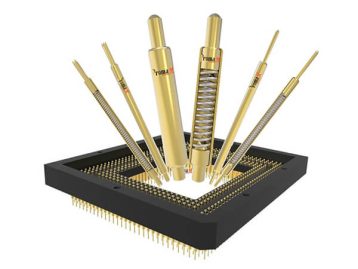In today’s interconnected world, where technology drives progress across industries, connectors play a pivotal role in enabling seamless communication and power transmission.
Among the various types of connectors, male and female connectors stand out as fundamental components that ensure reliable connections in a wide range of applications.
In this blog, we will delve into the world of male and female connectors, exploring their characteristics, applications, differences, and the vital role they play in achieving successful connections.
Male Connectors: The Initiators of Connectivity
Male connectors, as the name suggests, are connectors that have protruding pins or prongs designed to fit into corresponding female connector slots or receptacles.
These connectors are often characterized by their protruding components and are designed to initiate and establish the connection. Male connectors are widely used in electronics, electrical systems, and various industries where power and signal transmission are critical.
One notable feature of male connectors is their physical design. The protruding pins are carefully engineered to ensure a secure fit into female connectors, minimizing the risk of accidental disconnection. This design also allows for precise alignment during the connection process.
Applications of Male Connectors
Male connectors find applications in a multitude of industries. In the realm of electronics, USB connectors are a prime example of male connectors that facilitate data transfer and charging between devices.
Additionally, audio and video equipment, such as HDMI cables, utilize male connectors to transmit high-definition signals between devices like televisions, projectors, and gaming consoles.
Moreover, the automotive industry also relies heavily on male connectors for establishing connections within vehicles’ electrical systems.
These connectors enable the smooth operation of various components, from sensors and lighting to entertainment systems and power distribution.
Advantages and Disadvantages of Male Connectors
Male connectors offer several advantages, including their straightforward design, ease of insertion, and ability to establish connections quickly.
They are also less prone to dust and debris accumulation due to their design, making them suitable for outdoor and industrial environments.
However, their protruding pins can be susceptible to damage if not handled carefully, and they may not provide the same level of protection against moisture and contaminants as female connectors.

Female Connectors: The Receptive Counterparts
Female connectors are designed to receive and secure the protruding pins of male connectors. They are characterized by slots or receptacles that accommodate the pins, creating a secure and reliable connection.
Female connectors are often used to create a receptacle for power transmission, data exchange, and signal reception.
Applications of Female Connectors
Female connectors are prevalent in various industries, from consumer electronics to industrial automation.
USB ports on computers and charging stations are classic examples of female connectors that provide a point of connection for various devices.
Similarly, the audio industry employs female connectors for microphone and headphone jacks, ensuring clear sound transmission.
In the world of power distribution, female connectors are essential for outlets and sockets, enabling devices to draw power from the electrical grid.
These connectors are also used in networking and telecommunications equipment to establish connections between cables and devices.
Advantages and Disadvantages of Female Connectors
Female connectors offer advantages such as durability, protection against damage to pins, and resistance to moisture and contaminants.
Their design ensures a secure connection and minimizes the risk of accidental disconnection.
However, they may require additional protection to prevent dust and debris accumulation in the receptacle.

The Synergy between Male and Female Connectors
The true magic of connectivity occurs when male and female connectors come together to form a complete connection.
The precise alignment of pins with receptacles ensures proper transmission of power, data, or signals. Mating male and female connectors requires careful attention to ensure a secure and stable connection.
In applications such as electronics manufacturing, the proper alignment of male and female connectors is crucial to prevent damage to the connectors and the devices they connect.
In industries like aerospace and telecommunications, where reliability is paramount, the meticulous matching of connectors guarantees uninterrupted operations.
Key Differences between Male and Female Connectors
Male and female connectors exhibit several key differences. Male connectors have protruding pins, while female connectors have receptacles to receive those pins.
Male connectors initiate the connection, while female connectors receive and secure the connection.
These differences define the roles of each connector type and determine how they work together to establish seamless connections.
Choosing the Right Connector for Your Needs
Selecting the appropriate connector type depends on factors such as the specific application, environmental conditions, and the type of connection required.
Male connectors are often chosen when ease of insertion and alignment are critical, while female connectors are preferred for their protective receptacles and durability.
Consider the environment in which the connectors will be used. If the connection will be exposed to moisture, dust, or contaminants, female connectors might be a better choice due to their protective design.
Conversely, if the connection needs to be established quickly and frequently, male connectors might be more suitable.
Tips for Proper Connector Usage and Maintenance
To ensure the longevity and reliability of connectors, follow these tips:
1. Gentle Handling: Handle connectors with care to avoid damaging the pins or receptacles.
2. Proper Alignment: When connecting male and female connectors, ensure proper alignment to prevent bending or breaking of pins.
3. Regular Inspection: Periodically inspect connectors for signs of damage, corrosion, or debris buildup.
4. Cleaning: Clean connectors using appropriate methods to prevent dust and debris accumulation.
5. Protection: Use protective covers when connectors are not in use to prevent contamination.

Examples of Male and Female Connectors in Different Industries
1. Electronics: USB connectors in laptops and smartphones.
2. Automotive: Power connectors for lights, sensors, and entertainment systems.
3. Aerospace: Connectors for avionics and communication systems.
4. Industrial Automation: Connectors for sensors, actuators, and control systems.
Future Trends in Connector Technology
As technology evolves, so do connectors. Trends include:
1. Miniaturization: Connectors are becoming smaller and more compact.
2. Higher Data Rates: Connectors are being designed to support faster data transfer speeds.
3. Wireless Connectivity: Wireless connectors are emerging as alternatives to traditional wired connections.
Conclusion: Enabling Connectivity through Male and Female Connectors
In a world where seamless communication and power transmission are paramount, male and female connectors play an essential role in ensuring successful connections.
Their distinct designs and functions make them indispensable components in a wide range of industries, from electronics and automotive to aerospace and industrial automation.
By understanding the characteristics, applications, and differences between male and female connectors, we can harness their potential to enable connectivity and drive technological progress across various fields.
Whether it’s a USB cable connecting devices or an electrical socket powering a home, male and female connectors work silently to bridge the gap and keep our modern world connected.











